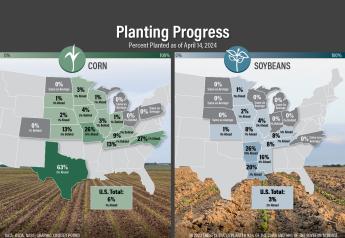EPA reveals national enforcement initiatives ahead of 2016 election

If you thought you had to wait until after the 2016 election to learn about the Environmental Protection Agency's (EPA) next iteration of National Enforcement Initiatives—think again. The EPA has announced that, as of Oct. 1, 2016, it will focus on two new enforcement initiatives (and expand one existing initiative) during the next three years. The agency also announced the continuation of four prior enforcement initiatives and the conclusion of its initiative for reducing pollution from mineral processing operations.
Collectively, the new initiatives span four major environmental categories: air, energy extraction, hazardous chemicals and water. Focused enforcement in these areas may not stop with the EPA; they also mirror the Occupational Safety and Health Administration's (OSHA) emphasis on preventing catastrophic workplace accidents. All affected industries—including energy, mining, chemical, manufacturing, food processing and agriculture—should give special attention to these enforcement initiatives.
The EPA's New and Expanded Enforcement Initiatives for Fiscal Years 2017 - 2019
Hazardous Chemicals
- Reducing Risks of Accidental Releases at Industrial and Chemical Facilities:
The most significant part of the EPA's announcement is its heightened focus on accidents at facilities that make, use or store extremely hazardous substances. Citing environmental justice concerns, the EPA is also looking to increase enforcement at facilities in low income or minority communities. Facilities that are required to have risk management plans (RMPs) under the Clean Air Act can expect increased scrutiny, particularly given the draft revisions that were recently proposed by the EPA.
This initiative also follows OSHA's Nov. 29, 2011 National Emphasis Program to reduce or eliminate catastrophic workplace hazards involving highly hazardous chemicals. Many in the chemical industry, including the American Chemistry Council, are concerned that this initiative foreshadows more aggressive enforcement under the Clean Air Act's "General Duty Clause" as a "catch-all" for industrial accidents, as is increasingly common under OSHA.
Water
- Keeping Industrial Pollutants Out of the Nation's Waters:
The EPA has identified certain industrial sectors as "disproportionate contributors" to the pollution and sediment that affects numerous bodies of water, especially those that threaten to contaminate drinking water sources. Mining, chemical, manufacturing, food processing and primary metals manufacturing entities should expect more enforcement activity, particularly those that operate in more than one state.
Air
- Cutting Toxic Air Pollutants:
The EPA will continue to focus on limiting leaks, flares and excess emissions from refineries and chemical plants. Facilities with large liquid storage tanks, including refineries, chemical plants and other bulk storage facilities located in ozone nonattainment areas and fence line communities will likely be targeted as well. Moving forward, the EPA has expanded its focus to emission control requirements stipulated by the Resource Conservation and Recovery Act (RCRA). Treatment, storage and disposal facilities (TSDFs) and large quantity generators (LQGs) are likely targets for this new enforcement initiative.
In addition, the EPA plans to continue four prior initiatives: (1) reducing air pollution from the largest sources; (2) ensuring energy extraction activities comply with environmental law; (3) keeping raw sewage and contaminated stormwater out of our nation's water supply; and (4) preventing animal waste from contaminating surface and ground water. For the most part, the extension of these initiatives is designed to monitor the progress of existing settlement agreements.
The EPA's New Weapon: Next Generation Enforcement
Regulated industries and entities should also anticipate the EPA's plan to incorporate Next Generation Enforcement into all enforcement priorities. The agency specifically highlighted its intention to utilize the latest monitoring technologies, data analytics and other measures to increase transparency, many of which go far beyond regulatory requirements. This broad definition suggests a potentially sweeping approach to identifying enforcement targets and underscores the importance of taking proactive measures to minimize potential exposure.
What's Next?
Although the EPA solicited public comment while these initiatives were being developed, it was under no legal requirement to do so. As a result, the statistics upon which the EPA bases these initiatives are not subject to the same level of scrutiny, leaving many to question their validity. Nonetheless, these initiatives reflect the EPA's continuing strategy of initiating fewer new enforcement actions in favor of rigorously pursuing larger cases—an approach the agency has demonstrated for the past five years. This targeted enforcement strategy has resulted in increased fines per action, which means that the EPA has been less willing to negotiate penalties with alleged violators.
The focus on larger cases is expected to continue, with the EPA stating that it will specifically target facilities that operate in multiple states to support "a consistent national strategy." In response, some states have complained about an ongoing lack of collaboration from the EPA and an overly heavy emphasis on enforcement rather than compliance assistance.
Despite the uncertainty surrounding the outcome of the 2016 election, regulated industries and entities can formulate a working understanding of the EPA's enforcement priorities for the next three fiscal years. Major industrial, energy, and food and agricultural businesses should proactively assess areas of exposure and take steps to preemptively address possible issues to avoid being caught in the EPA's cross-hairs.







